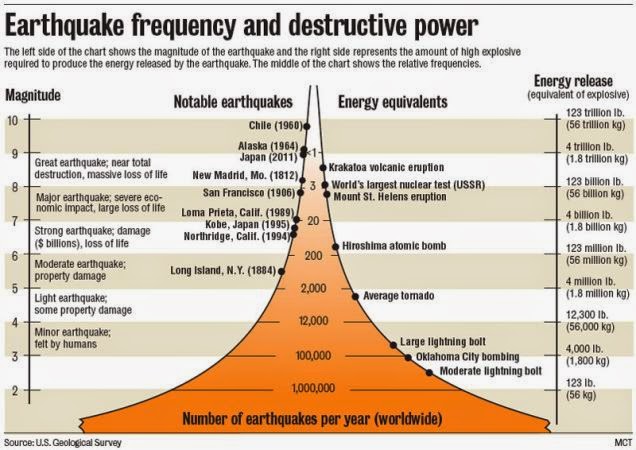

#Cantebury earthquake 2010 moment magnitude scale software#
However, with the development of increasingly powerful and affordable personal computers in modern times, combined with the availability of reasonably priced and open-source software alternatives, advanced analytical methods have never been more accessible and cost effective even with small to medium sized projects. nuclear powerplants, tall buildings, large dams, and long-span bridges. The Probabilistic Seismic Hazard Analysis (PSHA), development of time histories, seismic 1D Site Specific Response Analysis (SSRA), and Soil Foundation-Structure Interaction (SFSI) are typically used in important/critical infrastructure projects, i.e. In a lot of designs, the geotechnical and the structural engineer fail to work in a collaborative manner, and ultimately, the intricacies in soil foundation-structural-interaction are not captured and/or explored.Īn example of the current application of site-specific geotechnical earthquake engineering is illustrated in Figure 1.

The Z factor map in NZS 1170.5 is generalised in an effort to cover all New Zealand but limited to an earthquake database up to the year 2000 while several mid to high-rise buildings in Christchurch were damaged from earthquake shaking and/or soil liquefaction during the 2010-2011 Canterbury Earthquake Sequence (CES). non-linear behaviour of the soil and liquefaction. The elastic site spectra for horizontal loading as per NZS 1170.5 is simplified using spectral shape coefficient based on site classification of Soils A, B, C, D, and E without considering site specific effect, i.e. INTRODUCTIONįor the majority of practices in New Zealand, the most widely adopted methodology to calculate earthquake demand to building structures involves using the hazard factor, Z in combination with site classification as per NZS 1170.5:2004.

This approach requires more effort but does provide an improved and realistic result of the building’s behaviour including considerations of the influence of soil foundation-structure interaction.

The result from the geotechnical analysis can be used as the input for models incorporating soil foundation-structure interaction with further refinement and verification. Dynamic soil properties were derived from the analysis of geotechnical data acquired from the site, this included shear wave velocity (V s) profiles from downhole tests. A medium-rise multi-storey building with a 3.0m deep basement was modelled and analysed in ETABS software using non-linear elements. Then, the time histories were propagated from Riccarton Gravel to ground surface using non-linear, one dimensional (1D) total stress analysis in DEEPSOIL 6.1. A suite of eleven spectrally-matched, single-component horizontal earthquake acceleration time histories, was developed for each of the 25-year and 500-year return period loading conditions. It was compared with the New Zealand National Seismic Hazard Model (NZSHM) which form the basis for NZS 1170.5:2004. This model includes active faults, area sources, and time-dependent point source model based on the modified-Oomori Law. The hazard model is developed using open-source Seismic Hazard Analysis (SHA) software (OpenQuake 2.1.0). Miyamoto’s New Zealand seismic hazard model was used as the basis for computing PSHA and deaggregation. Various analytical techniques were utilized including Probabilistic Seismic Hazard Analysis (PSHA), development of time histories, Site Specific Response Analysis (SSRA), and Soil Foundation-Structure Interaction (SFSI). A site-specific geotechnical engineering approach was proposed as part of a seismic retrofit design of a multi-storey building in Christchurch CBD (Central Business District).


 0 kommentar(er)
0 kommentar(er)
